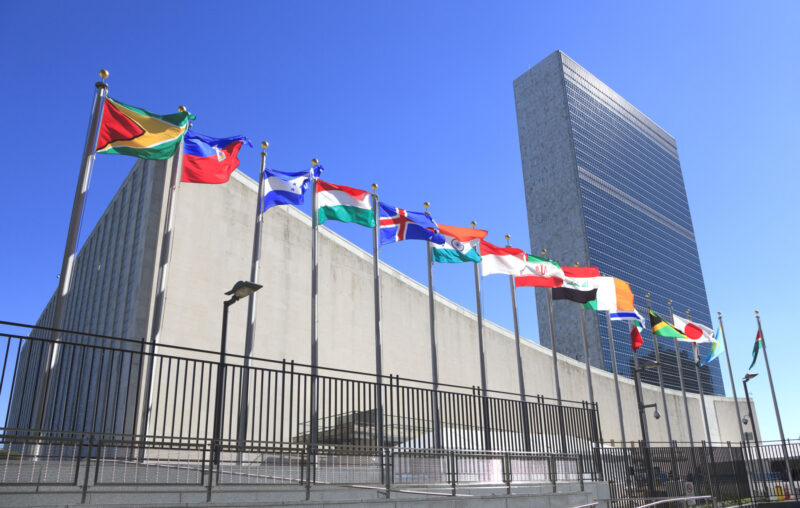
The acronym ESG (representing environmental, social, and governance criteria for investment and business metrics) gained mainstream attention in 2020, and has since been political fodder for those wishing to weigh in on wokewashing matters.
The backlash over ESG has been strong, evidenced by the fact that anti-ESG regulatory developments have outpaced those that are pro-ESG over the past few years, largely due financial concerns over taxpayer dollars. The ESG industry, however, shows no signs of slowing down, and initiatives seem to be ramping up on a global scale. As such, it is worth considering how we got here, who is in charge, and what lies ahead.
How It Started
In 1986, the Declaration on the Right to Development (RtD) was put forth by the UN Commission for Human Rights, and it proclaimed RtD to be “an inalienable human right by virtue of which every human person and all peoples are entitled to participate in, contribute to and enjoy economic, social, cultural and political development.” In conjunction with RtD, the concept of a New International Economic Order (NIEO) emerged, positing that an economic foundation was a necessary factor for safeguarding human rights.
Taken together, the RtD and NIEO concepts created a call to action for the financial sector to play its part in global affairs. Development, after all, doesn’t come free. As such, the curtailing of investments, as well as the attainment of financial assistance, became a core focus for the UN shortly thereafter.
Throughout the 1990s, earmarked contributions became not only acceptable but encouraged, and from 1994 to 2009 contributions to UN operational activities by private actors increased by over 200 percent. Pressure for the private sector to further contribute toward developmental and environmental matters is now considered common practice. It is worth noting that in 2018, over $12 trillion worth of investment funds were contingent on companies’ meeting certain environmental, social, and governance (ESG) standards.
In 1997, in consultation with the United Nations Environment Programme (UNEP), the Global Reporting Initiative (GRI) was founded as the world’s first corporate sustainability reporting framework for tracking and reporting ESG. In relation to the GRI, the UN’s Finance Initiative, operating under the UNEP promoted throughout the early 2000s, led to the development of the Principles for Responsible Investment (PRI). The PRI officially launched in 2005 and had a ripple effect leading to the creation of the Principles for Sustainable Insurance (PSI) in 2012, and the Principles for Responsible Banking (PRB) in 2019 — all of which call upon firms to incorporate ESG in their financial valuations.
Who Is In Involved
As of 2022, the PRI has 5,179 fee-paying signatories who claim to adhere to ESG metrics and the GRI is now the top framework employed for ESG reporting. And although ESG rating and reporting services can be quite costly, it is a price that seemingly must be paid.
Currently, 90 percent of S&P 500 firms engage in ESG disclosures and, according to Deloitte, more than half of all managed investment assets will be ESG-mandated by 2024.
ESG assessments are a daunting matter for firms, and any fall from grace in a ratings review can be put on full display, to which Mark Zuckerberg and Elon Musk can attest. Unlike financial data that is audited by accountants who are in a credible and specialized role, ESG measurements are conducted by so-called sustainability experts – a fairly new field encompassing a vast array of concerns and production processes.
A representative of Sustainalytics noted in a 2020 Harvard Business Review article the rather convoluted task of formulating rating systems given that “many environmental and social impacts are hard to measure” and data inputs “are fundamentally less structured, less complete, and of lower quality than financial data.” Metrics regarding social performance are perhaps the trickiest to track and interpret, and so evaluations tend to be largely politically inclined.
To be sure, ESG data can result in conflicting reports, and a great example illustrating this fact was when Wealthspire cited Tesla as receiving an A rating from MSCI, a B- rating from S&P Global, and a high-risk rating from Sustainalytics.
Despite the complexity (or absurdity) of ESG assessments, battles over who gets to determine rankings have been heating up, as interest from third party agencies has surged and a plethora of stipulations and standards have emerged.
What Lies Ahead
MSCI and Sustainalytics currently dominate as the major ESG service agencies, and GRI guidelines, as well as standards by The Sustainability Accounting Standards Board (SASB), run supreme as the frameworks being used.
In 2021, SASB merged with the IIRC (International Integrated Reporting Council) to form the Value Reporting Framework – which was then absorbed by the International Financial Reporting Standards (IFRS) Foundation in 2022. And, coincidentally, early on in 2022, the IFRS Foundation announced a strategic alliance with the GRI, which is quite telling indeed.
At the Sustainable Impact Meetings held in September 2022, it was announced that metrics and data inputs for reporting are expected to be further synthesized and systematized, and this message was reiterated at Davos in January 2023. As such, those criticizing ESG and citing discrepancies and inconsistencies as a top concern may find their arguments are only fanning the flames. Centralized planning is clearly underway to standardize and institutionalize the disclosure process.


0 Comments